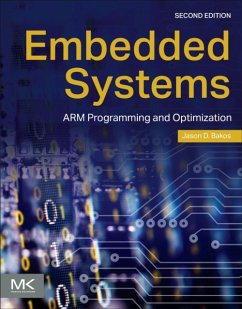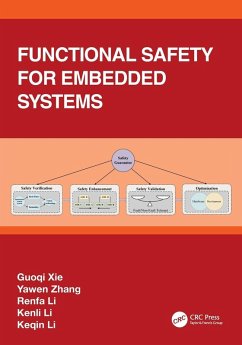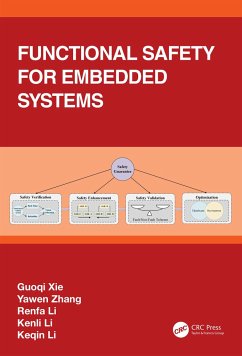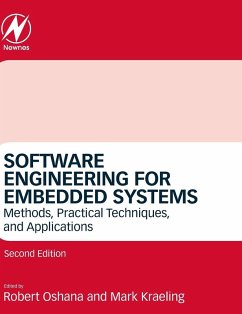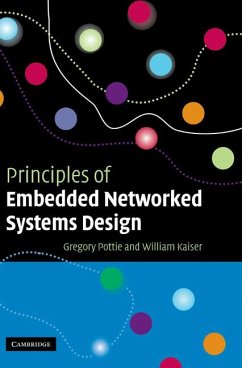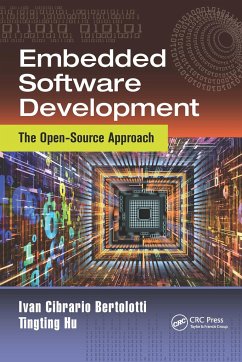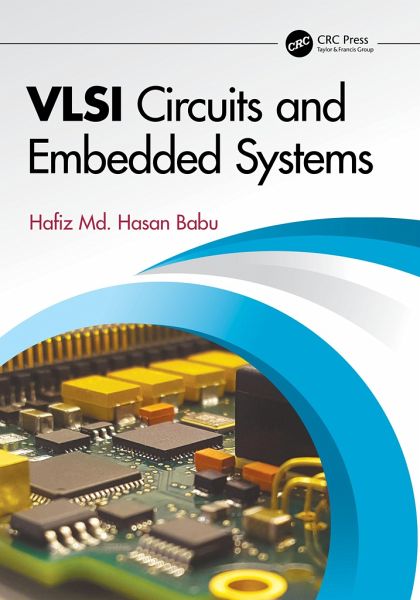
VLSI Circuits and Embedded Systems

PAYBACK Punkte
54 °P sammeln!
Very Large-Scale Integration (VLSI) creates an integrated circuit (IC) by combining thousands of transistors into a single chip. While designing a circuit, reduction of power consumption is a great challenge. VLSI designs reduce the size of circuits which eventually reduces the power consumption of the devices. However, it increases the complexity of the digital system. Therefore, computer-aided design tools are introduced into hardware design processes.Unlike the general-purpose computer, an embedded system is engineered to manage a wide range of processing tasks. Single or multiple processin...
Very Large-Scale Integration (VLSI) creates an integrated circuit (IC) by combining thousands of transistors into a single chip. While designing a circuit, reduction of power consumption is a great challenge. VLSI designs reduce the size of circuits which eventually reduces the power consumption of the devices. However, it increases the complexity of the digital system. Therefore, computer-aided design tools are introduced into hardware design processes.
Unlike the general-purpose computer, an embedded system is engineered to manage a wide range of processing tasks. Single or multiple processing cores manage embedded systems in the form of microcontrollers, digital signal processors, field-programmable gate arrays, and application-specific integrated circuits. Security threats have become a significant issue since most embedded systems lack security even more than personal computers. Many embedded systems hacking tools are readily available on the internet. Hacking in the PDAs and modems is a pervasive example of embedded systems hacking.
This book explores the designs of VLSI circuits and embedded systems. These two vast topics are divided into four parts. In the book's first part, the Decision Diagrams (DD) have been covered. DDs have extensively used Computer-Aided Design (CAD) software to synthesize circuits and formal verification. The book's second part mainly covers the design architectures of Multiple-Valued Logic (MVL) Circuits. MVL circuits offer several potential opportunities to improve present VLSI circuit designs. The book's third part deals with Programmable Logic Devices (PLD). PLDs can be programmed to incorporate a complex logic function within a single IC for VLSI circuits and Embedded Systems. The fourth part of the book concentrates on the design architectures of Complex Digital Circuits of Embedded Systems. As a whole, from this book, core researchers, academicians, and students will get the complete picture of VLSI Circuits and Embedded Systems and their applications.
Unlike the general-purpose computer, an embedded system is engineered to manage a wide range of processing tasks. Single or multiple processing cores manage embedded systems in the form of microcontrollers, digital signal processors, field-programmable gate arrays, and application-specific integrated circuits. Security threats have become a significant issue since most embedded systems lack security even more than personal computers. Many embedded systems hacking tools are readily available on the internet. Hacking in the PDAs and modems is a pervasive example of embedded systems hacking.
This book explores the designs of VLSI circuits and embedded systems. These two vast topics are divided into four parts. In the book's first part, the Decision Diagrams (DD) have been covered. DDs have extensively used Computer-Aided Design (CAD) software to synthesize circuits and formal verification. The book's second part mainly covers the design architectures of Multiple-Valued Logic (MVL) Circuits. MVL circuits offer several potential opportunities to improve present VLSI circuit designs. The book's third part deals with Programmable Logic Devices (PLD). PLDs can be programmed to incorporate a complex logic function within a single IC for VLSI circuits and Embedded Systems. The fourth part of the book concentrates on the design architectures of Complex Digital Circuits of Embedded Systems. As a whole, from this book, core researchers, academicians, and students will get the complete picture of VLSI Circuits and Embedded Systems and their applications.







